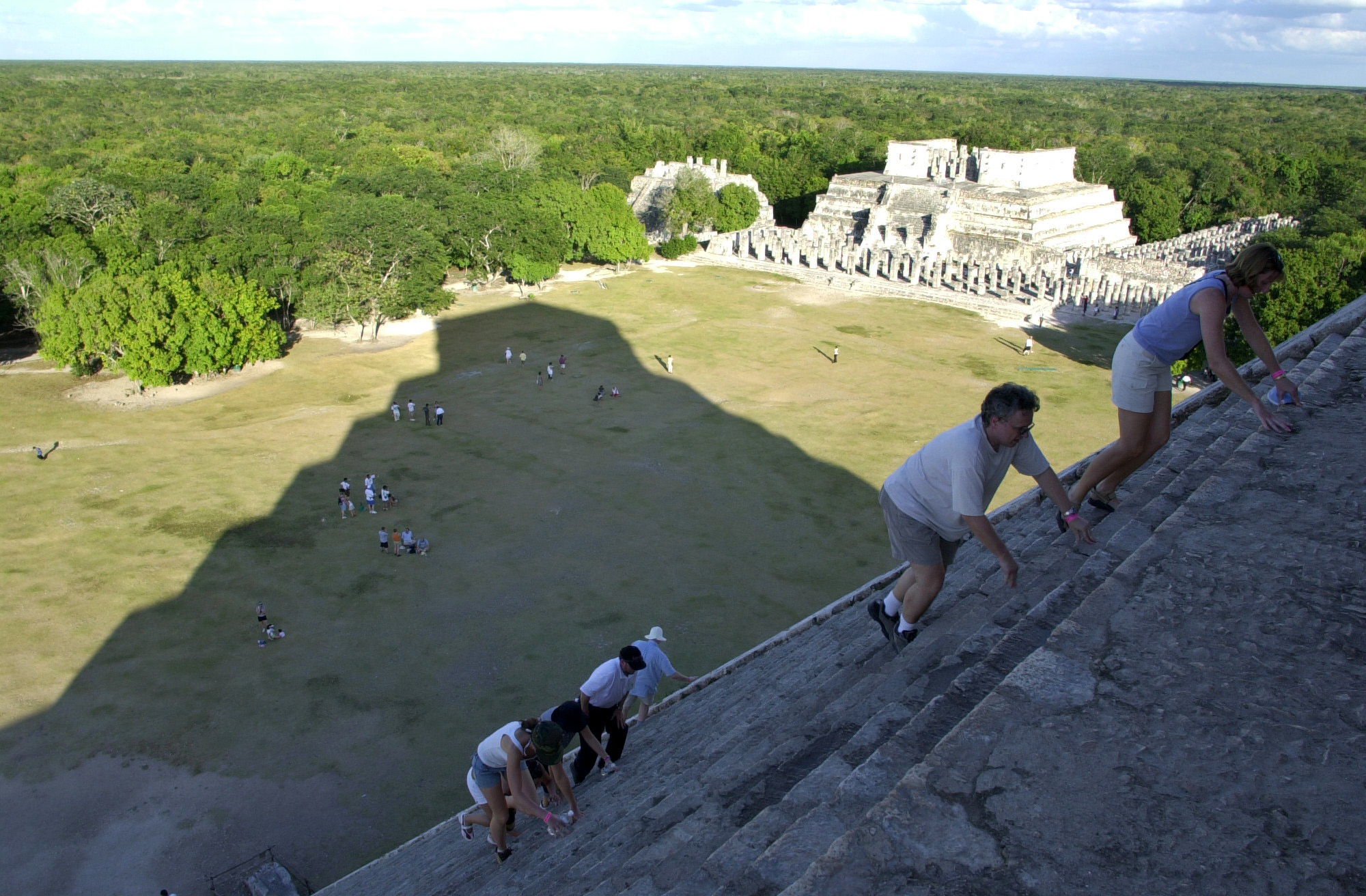It was a good story while it lasted: A 15-year-old boy discovered a lost city by theorizing that a modern star map would correlate with ancient Maya settlements. It seemed to fit the common understanding of the Maya as peaceful stargazers, centuries ahead of their time in astronomical observation and deeply mystical. It only makes sense they’d plan their cities to align with constellations.
The teenage scientist, William Gadoury, of Saint-Jean-de-Matha, Quebec, overlaid constellations and known Maya cities. When he found a gap where it seemed a settlement ought to have been, he consulted satellite imagery and found shapes the looked man-made. Suddenly, the lost city story went viral.
The Canadian Space Agency, which had supplied Gadoury with the satellite images, swiftly awarded him a Medal of Merit. A University of New Brunswick expert on geospatial technology suggested he might have found a metropolis with 30 buildings and a large pyramid. The teen was interviewed by the BBC, and the public passed along word of his achievement as his story skyrocketed to the top of the global media’s trending topics.
The only problem is, Gadoury was most likely wrong. David Stuart, a professor at the University of Texas at Austin and one of the world’s leading experts on the Maya, was among the first to raise an alarm. He argued that the square shape Gadoury saw on a satellite image of the Maya heartland was probably a fallow agricultural field. Since then, numerous other experts have cast doubts on Gadoury’s city, some even presenting evidence that what was aligned with the constellations was actually an old marijuana plot.
The rise and fall of this particular news flash is a perfect illustration of the way a hyperspeed media landscape can elevate speculative, unproven “facts” to prize-worthy status. On a recent Sunday, the satirist John Oliver devoted his commentary on his HBO show, “Last Week Tonight,” to the problem of junk science and the media’s role in swiftly enshrining hypothesis and theory as truth.
Oliver gleefully mimicked the hyperbolic morning-talk-show approach to science journalism: “A new study shows coffee can kill you! A new study shows coffee can cure cancer!”
The lost city story undeniably had a lot going for it as a media phenomenon. It conformed to cherished tropes: the appealing plotline of the genius kid scientist who sees what the hidebound researchers and experts missed. And an equally appealing confirmation of popular if incomplete notions about the Maya. The story felt right, not least because of the stereotypical notion of indigenous peoples innately in tune with nature. (Never mind the detail that the Maya exploited the land to the point of environmental collapse.)
Gadoury undoubtedly deserves genuine praise for his initiative and drive. His hypothesis about how constellations relate to Maya cities may even deserve closer study. Certainly archaeologists, Maya experts and geospatial scientists have something to say to each other: Remote-sensing technology has enhanced archaeological ground surveys in spectacular fashion in Jordan, Egypt, Peru and other locales, earning researcher Sarah Parcak the nickname “space archaeologist.”
But so much else about this particular lost city story is cause for concern. We’ve come to value the thrill of the seeming breakthrough over the slower processes of analytical thinking and the importance of scholarly expertise. The geospatial specialist at the University of New Brunswick and the Canadian Space Agency should have taken the time to call a Maya expert for verification before giving Gadoury any sort of endorsement, let alone a medal.
As for the media, reporters too must cast a critical eye on scientific discoveries. They can’t hide behind merely presenting the news; they need to check findings with experts and scientists who weren’t involved in the research in question. As Oliver suggested when he lampooned the reporting on caffeine’s risks and benefits, a minimum requirement for science journalists is to understand the difference between initial trials and repeated studies that confirm results and build a consensus vetted through peer review.
Finally, all of us who consume the news could also do better in the critical-thought department. What trends on social media isn’t necessarily a fact. What sounds too good to be true usually is.
Still, there are several positive take-aways from the lost city story. Gadoury’s enterprise should serve as a model for other aspiring scientists; he may well have a bright future as an archaeologist. And the excitement the public demonstrated about even a false lost city discovery at least proves that interest in ancient civilizations is very much alive.
There are, no doubt, lost cities left to be discovered. The best way to do it is to support and fund careful collaborations between down-in-the-dirt archaeology and all the other sciences that can enhance their work. When that effort lands on the real thing, we’ll have something lasting to tweet, post, share and award.
Stephennie Mulder is a professor of art history and Middle Eastern studies at the University of Texas at Austin. She is a specialist in Islamic architecture and archaeology and a consultant on cultural heritage issues.
Talk to us
> Give us your news tips.
> Send us a letter to the editor.
> More Herald contact information.

























